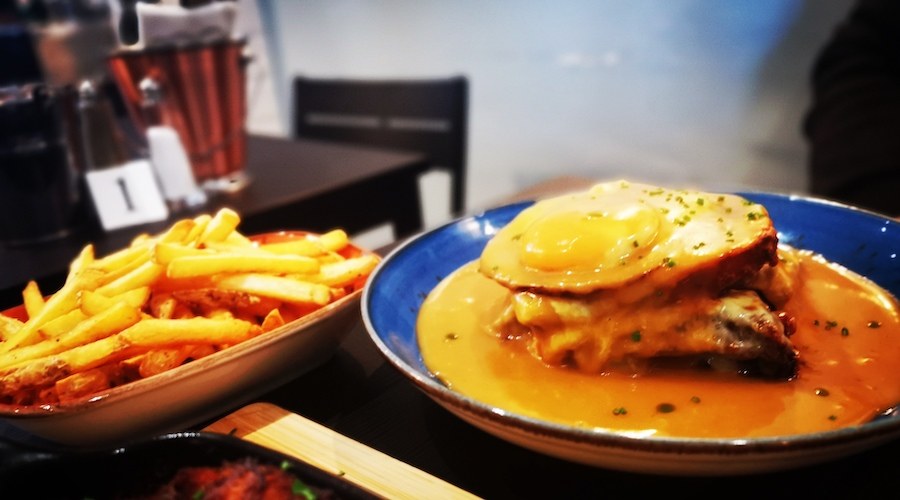Portuguese cuisine is a reflection of the country’s rich history and diverse cultural influences. Seafood plays a prominent role in Portuguese dishes, thanks to its coastal location. The use of olive oil, garlic, and onions adds depth of flavor to many traditional recipes. Bacalhau, a salted codfish, is a staple ingredient in Portuguese cuisine and is prepared in various ways. The Portuguese also have a love for pastries, with the famous Pastel de Nata being a must-try treat. From hearty stews to fresh seafood, Portuguese cuisine offers a delightful array of flavors that will satisfy any food lover.
The Influences & Ingedients of Portuguese Cuisine
Portuguese cuisine is heavily influenced by various cultures and historical events. Moorish and Mediterranean flavors have left a lasting impact on the country’s culinary traditions. The Age of Discovery also played a significant role in introducing new ingredients and spices to Portuguese cuisine. Additionally, Portuguese cuisine has been influenced by the Atlantic Ocean, with a strong emphasis on seafood dishes. The combination of these influences has resulted in a unique and diverse gastronomic experience in Portugal.
Portuguese cuisine is known for its use of fresh and flavorful ingredients. From the bountiful seafood found along the coast to the rich olive oil produced in the country, Portuguese dishes are a celebration of the country’s natural resources. Bacalhau, or salted cod, is a staple ingredient in many traditional dishes, while chorizo sausage adds a smoky and savory flavor. Other popular ingredients include Portuguese wines, piri piri sauce, and custard for desserts. These ingredients come together to create a diverse and vibrant culinary experience that showcases the unique flavors of Portugal.
Traditional Portuguese Dishes

Bacalhau: The Iconic Portuguese Dish
Bacalhau, also known as salted codfish, is the most iconic dish in Portuguese cuisine. It is said that there are more than 365 ways to cook bacalhau, one for each day of the year. This versatile ingredient is often used in traditional Portuguese dishes such as Bacalhau à Brás, Bacalhau com Natas, and Bacalhau à Gomes de Sá. Whether it is served as a main course or in a savory pastry, bacalhau never fails to impress with its unique flavor and texture.
Francesinha: A Hearty Sandwich from Porto
Originating from Porto, the Francesinha is a hearty sandwich that is a must-try for any food lover visiting Portugal. This indulgent dish consists of layers of ham, linguiça, and steak, sandwiched between two slices of bread. It is then topped with melted cheese and smothered in a rich tomato and beer sauce. Served with a side of fries, the Francesinha is a true delight for those craving a satisfying and flavorful meal.

Pastel de Nata: A Sweet Delight from Lisbon
Pastel de Nata, also known as Portuguese custard tart, is a delicious and iconic dessert that originated in Lisbon. These flaky pastries are filled with a creamy custard made from egg yolks, sugar, and cream, and are then baked until they develop a caramelized top. The result is a sweet and creamy treat that is loved by locals and visitors alike. Pastel de Nata is often enjoyed with a cup of espresso or Portuguese coffee. If you have a sweet tooth, a visit to Lisbon is incomplete without trying this mouthwatering delicacy.

Regional Specialties
Cataplana: A Seafood Delight from Algarve
The Cataplana is a traditional Portuguese dish that originated in the Algarve region. It is named after the unique copper cookware used to prepare it, also called a cataplana. This seafood delight is a flavorful combination of fresh fish, clams, shrimp, and other shellfish, cooked with onions, garlic, tomatoes, and spices. The dish is typically served with aromatic rice and crusty bread to soak up the delicious sauce. The cataplana is not only a culinary delight but also a visual treat, as it is often served in the same copper cookware it is cooked in. It is a must-try dish for seafood lovers visiting the Algarve region.

Cozido à Portuguesa: A Hearty Stew from Minho
Cozido à Portuguesa is a hearty stew that originates from the Minho region of Portugal. This traditional dish is a true celebration of Portuguese flavors, combining an array of meats, sausages, and vegetables in a flavorful broth. The stew is typically made with ingredients such as beef, pork, chicken, chorizo, cabbage, carrots, and potatoes. The long cooking process allows the flavors to meld together, resulting in a rich and satisfying dish. Cozido à Portuguesa is often enjoyed as a family meal or during festive occasions. It is a testament to the country’s culinary heritage and a must-try for any food lover visiting Portugal.
Arroz de Marisco: Seafood Rice from Setúbal
Arroz de Marisco is a delicious and flavorful dish that originates from Setúbal, a coastal town in Portugal. This dish is a true celebration of seafood, combining a variety of fresh seafood such as shrimp, clams, mussels, and squid with fragrant rice and a rich tomato-based broth. The combination of flavors and textures in Arroz de Marisco is truly delightful, making it a must-try dish for seafood lovers. The dish is often garnished with fresh parsley and served with a side of crusty bread to soak up the flavorful broth. Arroz de Marisco is a perfect representation of the coastal cuisine of Portugal and is enjoyed by locals and tourists alike.
Exploring the Rich Flavours & Diversity of Portuguese Cuisine
Portuguese cuisine is a treasure trove of bold and diverse flavors that reflect the country’s rich culinary heritage. From the iconic Bacalhau dish made with salted cod to the hearty Francesinha sandwich from Porto, each region of Portugal offers unique and delicious traditional dishes. The coastal region of Algarve is known for its mouthwatering Cataplana, a seafood delight cooked in a special copper pot. In Minho, the Cozido à Portuguesa stew is a comforting and flavorful dish made with a variety of meats and vegetables. And in Setúbal, the Arroz de Marisco is a flavorful seafood rice dish that showcases the abundance of fresh seafood in the area. Exploring the diverse flavors of Portuguese cuisine is a culinary adventure that will leave you wanting more.

In the ever-evolving world of gastronomy, it is important to preserve the traditions and culinary heritage of a country. Portuguese cuisine is no exception. While modern cooking techniques and international influences have made their way into Portuguese kitchens, there is a strong emphasis on maintaining the authenticity and flavors of traditional dishes.
Chefs and home cooks alike strive to keep the essence of Portuguese cuisine alive, using locally sourced ingredients and time-honored recipes passed down through generations. This commitment to preserving tradition ensures that the unique and delicious flavors of Portuguese cuisine continue to delight diners around the world.
Portugal’s culinary scene is a true reflection of its rich cultural heritage and regional diversity. From the coastal regions of Algarve, known for its delectable seafood dishes like Cataplana, to the northern region of Minho, famous for its hearty stew Cozido à Portuguesa, the country offers a wide range of flavors and specialties.
Each region has its own unique ingredients and cooking techniques, resulting in a diverse and vibrant culinary landscape. Whether you’re a seafood lover, a meat enthusiast, or have a sweet tooth, Portuguese cuisine has something to satisfy every palate. So, embark on a gastronomic journey and discover the flavours that make Portugal a food lover’s paradise.












